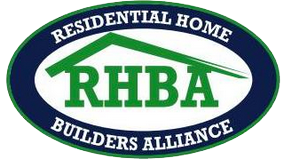13 Aug Flagging Safety
When signs, signals, and barricades do not provide enough protection for operations on highway or street construction, then flaggers or other traffic controls must be provided. Because flagging exposes the flagger to traffic— the number one cause of death for highway construction sites—the use of flaggers is avoided. Using the proper flagging signals, warning garments, and work practices, however, makes the job of flagging safer.
- Use proper STOP/SLOW paddles when hand signaling. STOP/SLOW paddles have a red STOP sign on one side and an orange SLOW sign on the other. Red flags should only be used in emergency situations. Use retroreflective hand-signaling devices at night.
- Use signals that conform to the Part VI of the Manual of Uniform Traffic Control Devices. Here are the signaling methods for STOP/SLOW paddles:
- To stop traffic—Face traffic and hold the STOP sign paddle toward traffic with your arm extended horizontally away from the body. Raise your free arm with your palm toward approaching traffic.
- To direct stopped traffic to proceed—Face traffic and hold the SLOW paddle toward traffic with your arm extended horizontally away from the body. Motion with your free hand for traffic to proceed.
- To alert or slow traffic—Face traffic holding the SLOW paddle toward traffic with your arm extended horizontally away from the body. You may motion up and down with your free hand, palm down, indicating that the vehicle needs to slow down.
- Wear an orange, yellow, or yellow-green vest, shirt, or jacket.
- Wear a retroreflective vest, shirt, or jacket at night. It’s also a good idea to wear white pants and a retroreflective hard hat at night.
- Coordinate with other flaggers and communicate by “walkie-talkie” if you have no visual contact.
- Know how to combat both heat and cold exposure, dress appropriately, and know where shelter is available.
- Be alert to symptoms associated with carbon monoxide from vehicular traffic (nausea and headache). If symptoms develop, get to fresh air.
- Use barricades, cones, tubular markers, vertical panels, drums, and barriers to mark areas.
- Be aware of construction equipment around you. In order to know what is approaching from behind, you may need to wear a hard hat mounted mirror, have a buddy “spot” you, or use some kind of motion detector. Equipment operators, too, should know where you are. Heavy equipment can crush and kill in a matter of seconds!
Flagging can be a safe job if you remain alert to everything around you at all times.

